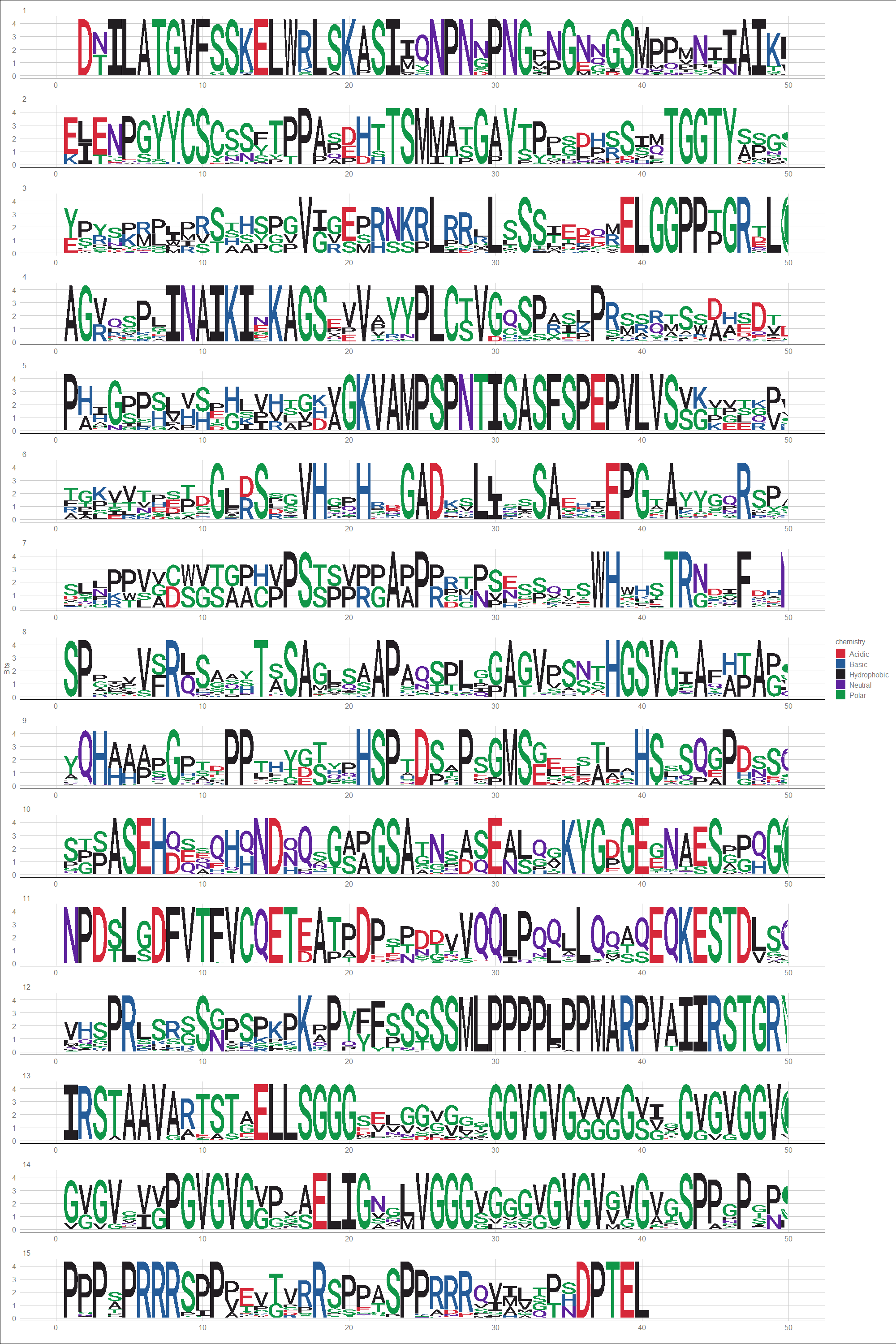CTF_NFI
- Domain
- CTF/NFI and MH1 domain
- Group
- Unclassified Structure
- PFAM
- PF00859
- Desciption
- Nuclear factor I (NF-I) or CCAAT box-binding transcription factor (CTF) [2, 1, 5] (also known as TGGCA-binding proteins) are a family of vertebrate nuclear proteins which recognise and bind, as dimers, the palindromic DNA sequence 5'-TGGCANNNTGCCA-3'. This family was first described for its role in stimulating the initiation of adenovirus DNA replication [6]. In vertebrates there are four members NFIA, NFIB, NFIC, and NFIX and an orthologue from Caenorhabditis elegans has been described, called Nuclear factor I family protein (NFI-I) [4]. The CTF/NF-I proteins are individually capable of activating transcription and DNA replication, thus they function by regulating cell proliferation and differentiation. They are involved in normal development and have been associated with developmental abnormalities and cancer in humans [5]. In a given species, there are a large number of different CTF/NF-I proteins, generated both by alternative splicing and by the occurrence of four different genes. CTF/NF-1 proteins contain 400 to 600 amino acids. The N-terminal 200 amino-acid sequence, almost perfectly conserved in all species and genes sequenced, mediates site-specific DNA recognition, protein dimerisation and Adenovirus DNA replication. The C-terminal 100 amino acids contain the transcriptional activation domain. This activation domain is the target of gene expression regulatory pathways elicited by growth factors and it interacts with basal transcription factors and with histone H3 [3].
- Rederence
-
- Chicken NFI/TGGCA proteins are encoded by at least three independent genes: NFI-A, NFI-B and NFI-C with homologues in mammalian genomes. Rupp RA, Kruse U, Multhaup G, Gobel U, Beyreuther K, Sippel AE. Nucleic Acids Res. 18, 2607-16, (1990).
- The proline-rich transcriptional activator of CTF/NF-I is distinct from the replication and DNA binding domain. Mermod N, O'Neill EA, Kelly TJ, Tjian R. Cell 58, 741-53, (1989).
- A proline-rich TGF-beta-responsive transcriptional activator interacts with histone H3. Alevizopoulos A, Dusserre Y, Tsai-Pflugfelder M, von der Weid T, Wahli W, Mermod N. Genes Dev. 9, 3051-66, (1995).
- DNA-binding specificity and in vivo targets of Caenorhabditis elegans nuclear factor I. Whittle CM, Lazakovitch E, Gronostajski RM, Lieb JD. Proc Natl Acad Sci U S A 106, 12049-54, (2009).
- The convergent roles of the nuclear factor I transcription factors in development and cancer. Chen KS, Lim JWC, Richards LJ, Bunt J. Cancer Lett 410, 124-138, (2017).
- Adenovirus DNA replication in vitro: identification of a host factor that stimulates synthesis of the preterminal protein-dCMP complex. Nagata K, Guggenheimer RA, Enomoto T, Lichy JH, Hurwitz J. Proc. Natl. Acad. Sci. U.S.A. 79, 6438-42, (1982).
